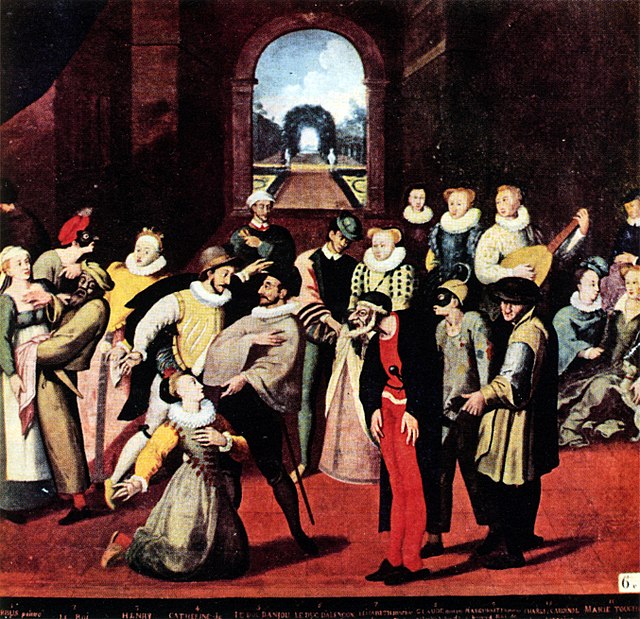Harlequin is the best-known of the comic servant characters (Zanni) from the Italian commedia dell'arte, associated with the city of Bergamo. The role is traditionally believed to have been introduced by the Italian actor-manager Zan Ganassa in the late 16th century, was definitively popularized by the Italian actor Tristano Martinelli in Paris in 1584–1585, and became a stock character after Martinelli's death in 1630.
The classical appearance of the Harlequin stock character in the commedia dell'arte of the 1670s, complete with batte or "slapstick", a magic wand used by the character to change the scenery of the play (Maurice Sand, 1860)
A scene from the commedia dell'arte played in France before a noble audience in 1571 or 1572 (Museum of Bayeux). Pantalone is front and center, while just to the right and slightly behind is Harlequin in motley costume, "the oldest known version of Harlequin's costume".
Tristano Martinelli's Harlequin costume as depicted in his Compositions de rhétorique, 1601
Harlequin at the Pantomime Theatre in Tivoli Gardens in Copenhagen, Denmark
Zanni, Zani or Zane is a character type of commedia dell'arte best known as an astute servant and a trickster. The Zanni comes from the countryside and is known to be a "dispossessed immigrant worker". Through time, the Zanni grew to be a popular figure who was first seen in commedia as early as the 14th century. The English word zany derives from this character. The longer the nose on the characters mask, the more foolish the character.
Sketch of Harlequin, a popular Zanni character
A leather version of a Zanni mask, profile view
Zanni (Jacques Callot)






